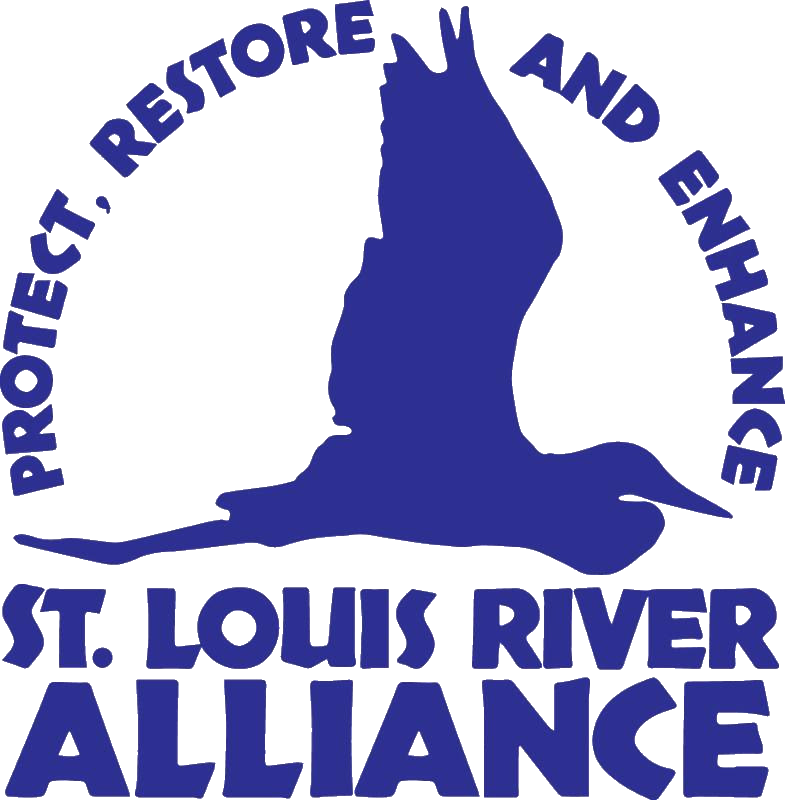AIS Phragmites Control
The Phragmites Removal program was a project funded through the St. Louis County Aquatic Invasive Species Prevention Program. The objective of the program was to remove non-native Phragmites from the St. Louis River Estuary.
The St. Louis County Aquatic Invasive Species Prevention Plan lists nonnative Phragmites as an aquatic invasive species. It’s presence in the Estuary is of concern because considerable public resources have been spent, and will be spent, to restore aquatic habitat, which will be compromised. It creates a very dense stand that may grow to 12 feet in height that suppresses other vegetation and wildlife.
It is now proposed to be categorized as a “prohibited” noxious weed in Minnesota. It was previously categorized as “restricted” which encourages management; prohibited category plants must be managed by owners of property on which the plant is found. Failure to do so will result in fines.
Community Action Duluth’s Stream Corps will assume leadership of the nonnative Phragmites control project established by the St. Louis River Alliance in 2016.

What are Phragmites?
In our estuary, there are several locations that contain a species of aquatic plant known as Phragmites australis or Common Reed. There is a native type that has been present in our region for centuries. However, within the last 200 years, a European variety has worked its way from the Atlantic coast over to the Great Lakes region.
This “nonnative” Phragmites has some noticeable differences when compared to the native species:
It grows in extremely dense stands, often displacing other native plant species;
It’s also remarkably tall, with some stands reaching over 15 feet.
It spreads through the area in many ways:
While it appears that more of the plant grows above the water’s surface, phragmites has an extensive root system. These roots send out little shoots, known as rhizomes that allow the plant to spread to nearby areas.
The plants have also developed stems that grow along the surface of the ground, called stolons that send up new stems, to allow a parent plant to spread;
It can also reproduce through seed production and the spread of stem fragments from activities such as trimming, mowing and even treatment!
It’s essential that the communities of the St. Louis River catch infestations early to stop the spread of this invasive species. In places where phragmites has gone unmanaged, drastic techniques are required to treat large infestations. For example, this photo shows a helicopter spraying herbicide onto what looks like not just a stand but a field of Phragmites.
In this region we are grateful to being tackling this problem in its infancy stage. Addressing this challenge now will not only protect us from devastating ecological impacts but will protect the time and resources invested in the remediation work of the region through AOC coordination.
Phragmites Technical Team of Advisors
The St. Louis River Alliance has convened a technical team made up of agencies, organizations, and stakeholders to implement a responsible management plan to prevent the spread of phragmites and educate and involve the community through Citizen Science Reporting. Alyssa Hoppe is our new Project Manager who has been working on management of this grant and facilitation of the technical team. She enjoys working with the Tech Team because of their scientific expertise, technical field experience and ability to work collaboratively to create the most comprehensive plan possible.
The Team is made up of:
• Community Action Duluth’s Stream Corps;
• Great Lakes Indian Fish and Wildlife Commission;
• 1854 Treat Authority;
• Fond du Lac;
• Duluth Seaway Port Authority;
• Minnesota Department of Natural Resources;
• Wisconsin Department of Natural Resources; and
• The City of Duluth – Invaders
With additional support from:
• St Louis County
• The Great Lakes Restoration Initiative
• Sea Grant through the University of Wisconsin
Management
Given the numerous ways of spreading and the rapid rate at which this occurs, it is essential to address the existence of the thriving nonnative phragmites stands at key sites in the estuary, as well as treating any new stands that have been identified.
This species can spread accidentally by heavy equipment whose intention is to restore the river. Pieces of stolons, rhizomes, or seeds can land on equipment that disturb the stands during restoration work and cause further spread into regions that have already been painstakingly restored.
This is where the experts on the technical team come in! We are responsible for reviewing the options that ensure the greatest possibility of species removal, while having the lowest possible impact on the surrounding human, plant, and animal communities.
For each round of treatment there are three steps:
A Winter Mechanical Knock-down by mowing or cutting of live or dead standing invasive plant material with brush-saws or hand-trimmers
A Chemical Treatment in the summer where application of aquatic formulas of herbicide (imazapyr or glyphosate) is sprayed to control non-native Phragmites
And lastly, monitoring each site for continued evaluation of progress.
The impacts to our community of non-native Phragmites goes untreated or even under-treated is difficult to swallow given the ecological, economic and recreational devastation seen in neighboring communities around the Great Lakes. Early treatment through Rapid Response is possible and our community has the opportunity to ensure protection of our vital river resources.


